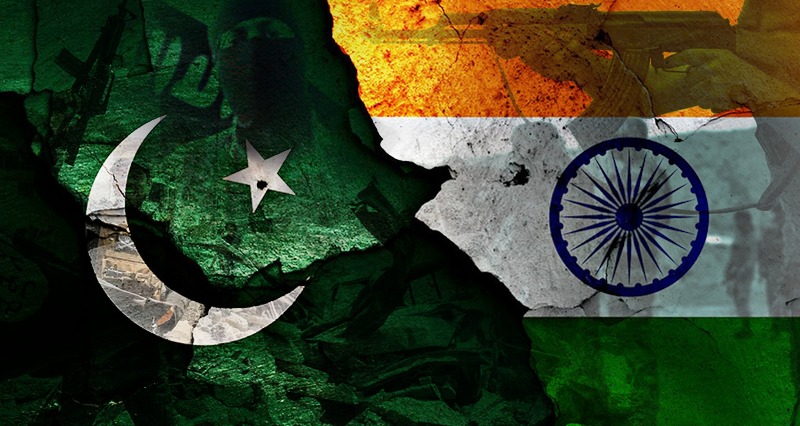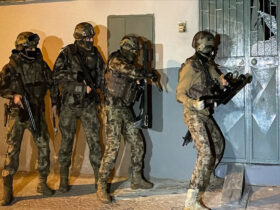The Islamic State plans revenge in the form of creating an eastern caliphate with the capital in Indian Kashmir.
On the background of a defeat in Syria and Iraq, ISIS says it has instituted a province in Indian Kashmir named Wilayah of Hind. The announcement followed a clash between the militants and security forces in Kashmir. Reports on the situation appeared in a number of Indian media that cited ISIS statements.
ISIS said through its mouthpiece news outlet Amaq News Agency it had wounded Indian soldiers in the city of Amshipora, the Shupiyan district of Jammu and Kashmir.
The scare that the grouping sprayed in Syria and Iraq for five years from 2013 through 2018, will linger on in the mind of the world community. But after the elimination of its leader, Abu Bakr al-Baghdadi, and after the Syrian and Iraqi Armed Forces expelled the militants with assistance from foreign allies from the sparse territories that ISIS had occupied, a number of adepts of the grouping fled the Middle East. Many opted for Afghanistan as a bridgehead for continuing their jihadist activities. A country where combat operations go on for more than forty years already, it suited the ISIS ideology of and plans for founding the Great Khorasan Wilayah most perfectly. As part of the project, the militants could also seize the neighboring Central Asian countries.
Yet Great Khorasan is just one part of an empire ISIS is pondering. On the global plane, it has always planned to set up two large caliphates, which would wave its flag. When the so-called western caliphate (in Syria and Iraq) flopped, the jihadists decided to launch a plan for the so-called eastern caliphate.
If one takes account of the caliphate’s geopolitical and historical concept, it has always had two camps – the Middle-Eastern (which embraced the lands stretching from the Persian Gulf to the Mediterranean and a number of regions in northern Africa) and the Eastern one (from Central Asia through to the Indian subcontinent, including today’s Iran, Pakistan and Afghanistan).
Since active engagement of foreign powers in operations in the Middle East inflicted heavy losses on ISIS in the Middle-Eastern caliphate, the needle of the compass moved eastwards. At present, the grouping is actively enticing descendants from Central Asia to come to Afghanistan, or specifically, to Nangarhar, Khost, and Hindukush, as well as to the tumultuous Kashmir.
Tehran University Prof. Pir-Mohammed Mollazehi, who is an expert on Afghanistan, Pakistan and India, said an interview with UWI that the danger of emergence of an eastern caliphate affiliated with ISIS was quite realistic.
“The new territories of ISIS’s deployment in Afghanistan and Kashmir are mountainous and difficult to traverse, and the local authorities have virtually no control over them,” Dr. Mollazehi said.
“And that is why the ISIS militants feel quite unrestrained and secure there as they hide out in caves. Besides, these regions have one more factor highly conducive to the strengthening of ISIS. Kashmir has a mostly Sunni population, which is highly discontent with the Indian authorities’ inaction in what concerns the establishing of order and security. The locals also complain over religious discrimination. The unstable situation in Kashmir provides ISIS – and any other radical Islamic grouping – with opportunities for recruiting the locals and mobilizing them into its ranks”, Dr. Mollazehi said.
“That is why ISIS’s declaration on forming what it calls the Wilayah of Hind sounds really serious and it should not looked down on as rubbish talk. The threat of infiltration and even expansion of the caliphate in Kashmir is quite realistic. ISIS has every chance to establish a caliphate there along the same pattern as in Raqqa in Syria or Mosul in Iraq. Instability and the absence of state control are playing into its hands. The other factor that boosts the ISIS capabilities in the Indian Kashmir notably is the presence of its actively functioning cells in Nangarhar, Afghanistan, where from it can redeploy its forces to Kashmir.”
It is difficult enough to predict at this moment to what agree India will be able to cope with the threat on its own, since ISIS draws its strength from the indignant local people displeased with the actions of the Indian authorities, not from a contingent of foreign mercenaries. The paradox of the situation is that India will not be ready to get down to cooperation and reconciliation with Pakistan for neutralizing the threat of terrorism even while the dangers coming from ISIS accumulate in its own territory. The Indians believe that all the woes of radical Islam have originated in Pakistan, which has cherished Taliban in its own bosom. Their efforts to neutralize the terrorist groupings and to establish full security in Kashmir fail exactly because of the Pakistani authorities’ connivance at the terrorists. Unless Islamabad renounces direct or indirect support of the militants striving to damage India, any hopes for cooperation will be naïve.
Dr. Mollazehi explains in this connection that, given the contradictions between Pakistan and India over the litigious Kashmir, the Indians do not have any doubts the Pakistani Inter-Services Intelligence (ISI) has been assisting the radical groupings Lashrak-e-Tayyiba, Jersh-e-Mohammad, and Hizb-ul-Mojaheddin, including the ISIS militants who redeployed from Afghanistan to Kashmir.
“The Indians believe therefore that the Pakistanis, who lay claims to Kashmir, will be able to foment chaos, against the backdrop of which they might seize the territory quite easily. Some radical groupings that operated in Kashmir previously, like Ansar-e-Khilafat and Hizb Mojaheddin, have announced their subordination to ISIS. Their main combatant forces consist of Indian Moslems, not of Arabs who have migrated there. The most risky factor is that their members got field training in Syria and Iraq. In other words, they are perfectly trained and have an impressive combat experience. Now they have returned to India and Pakistan and they can continue their jihadist activities in the absence of control on the part of the state. This means their tactics will be different from they used in Syria or Iraq where fresh recruits from all parts of the world flowed into the ISIS ranks. In Kashmir, the ethnic component matters much”.
Forecast
Aggravating the situation in India further is the ideology of Khilafat, or the so-called Khilafat Movement. It did not perish after the downfall of the Ottoman Empire and shifted over years from the Middle East to South Asia, including India. Today it has a very strong footing among the Moslem populations in Kashmir and other regions of India. Its strength definitely weakens the positions of the central government . It is important to remember that India has a Moslem population of 200 million people, which is ten times the size of entire Syrian population in 2011. India is the world’s second-largest nation in terms of the size of its Moslem community after Malaysia. Indian Moslems have spoken many a time about discrimination on the part of Hindu nationalistic movements. But there is one more significant factor to be remembered. The Indian Armed Forces do not resemble the Syrian Armed Forces in any way. They are very strong, have highly qualified cadres and are equipped with advanced defense technologies. India’s Research and Analysis Wing, or RAW, is the world’s largest most powerful intelligence community. That is why ISIS followers will unlikely find it easy to seize large portions of terrain in India in the same manner they did it in Iraq or Syria. Most obviously, they will be acting on a local scale.
The beefing up of ISIS ranks in Kashmir may raise the risk of damage to the border areas of the subcontinent only to the medium level. The threat will cover all the countries – Afghanistan, Pakistan, Bangladesh, Myanmar, and Sri Lanka. But Afghanistan and Pakistan will suffer more than others. The probability of seizure of large areas by ISIS forces there is big enough. As for other countries, the risks will mostly make themselves manifest in bellicosity, violence, and sting terrorist acts, not in grabbing control of whatever large regions.

















Leave a Reply